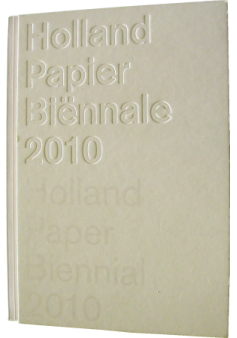Frank van der Ploeg (catalogue of the Holland Paper Biennale 2010, Rijswijk, pp.53-54):
"An old-fashioned radiator, the bellows of an accordion, döner kebab on a skewer but also voluptuous shellfish, brightly coloured miniatur folded paperchains, peculiar swings - on gossamer strings. The jewellery with a 'twist' by Lydia Hirte cannot be pinned down to just one definition.
Frozen movements
The pendants of German artist Lydia Hirte ... look misleadingly simple. What is more, it is impossible on the basis of a picture alone to estimate the scale of the little treasure bundles on her necklaces. The clean forms and colours conceal the effort and intensity involved in getting these trinkets into their finished state. However small the definitive ornaments may be, they put up quite a struggle when being forced into their straightjacktets.
Hirte uses fine card as her raw material. She cuts out basic, abstract shapes and rounds off the sharp corners. ... Afterwards she stacks the flat shapes and threads them together. She then rotates the resulting bundle in her hands, provoking the resistance of the paper. She tests the paper to its absolute limit without damaging the material. The slices of card reach beyond themselves as it were and as a result of the amassed tension take on three-dimensional forms. Hirte's `central concern is to detect and fix clear adorning shapes.´ Once the ultimate ornamental configuration has been reached, she twists and applies pressure to force the top and tail of the bundle into the same plane - like the eternal snake biting its own tail - and knots it in place...
Lydia Hirte declares her love of paper through the directness and tangibility of the material itself. The paper responds immediately to her touch; she feels the effect her fingers induce. In her quest for a strong image she allows herself to be guided by the materials's properties.
...
Because of the contortions in the pendants, their outward appearance is far from static. When the object has been fully torqued, it still looks loose and pliable. This is the power of Hirte's handiwork."
